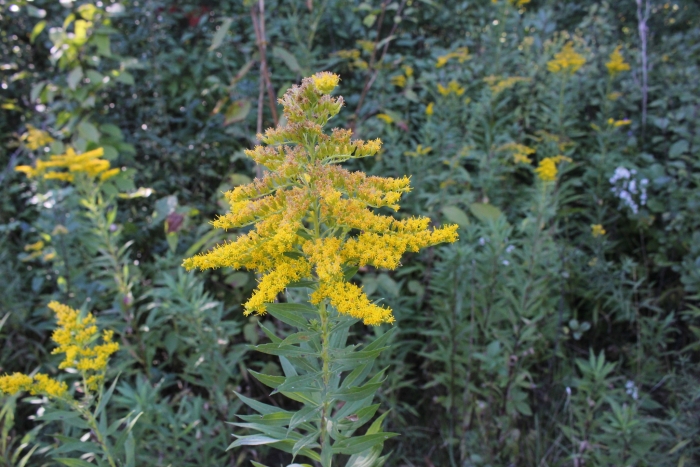Tall Goldenrod
(Solidago altissima)
Tall Goldenrod (Solidago altissima)
/
/

Quinten Wiegersma
CC BY 4.0




















































Estimated Native Range
Summary
Tall Goldenrod is valued for its vibrant yellow flowers which add late-season color to gardens and attract beneficial insects. It is often used in naturalistic plantings, wildflower meadows, and as a border plant in gardens that aim for a more informal appearance. This plant is adaptable to a range of soil types, though it prefers well-drained soils and can tolerate both full sun and partial shade. While it is generally low-maintenance, it can spread aggressively via rhizomes, making it potentially problematic in small garden spaces. In regions where it is not native, it can become invasive, outcompeting local flora. Gardeners should be cautious and consider planting non-invasive alternatives if there are concerns about its spread.CC BY-SA 4.0
Plant Description
- Plant Type: Herb
- Height: 2-6 feet
- Width: 1-3 feet
- Growth Rate: Moderate
- Flower Color: Yellow
- Flowering Season: Summer, Fall
- Leaf Retention: Deciduous
Growth Requirements
- Sun: Full Sun, Part Shade
- Water: Low, Medium
- Drainage: Medium, Fast
Common Uses
Bee Garden, Bird Garden, Border Plant, Butterfly Garden, Deer Resistant, Drought Tolerant, Fire Resistant, Fragrant, Low Maintenance, Rabbit Resistant, Showy Flowers, Street Planting
Natural Habitat
Open woodlands, prairies, meadows, and roadsides across North America and into Northeastern Mexico
Other Names
Common Names: Canada Goldenrod, Late Goldenrod, Solidage Très Haute, Verge D’Or Haute, Verge D’Or Très Élevée, Jättegullris
Scientific Names: , Solidago altissima, Solidago canadensis var. scabra, Solidago hirsutissima, Euthamia scabra, Solidago canadensis subsp. scabra, Solidago canadensis subsp. altissima, Solidago procera, Solidago lunellii, Solidago canadensis var. procera
GBIF Accepted Name: Solidago altissima L.